The history of your favorite (mainly) red nightshade involves a long and intricate tale that traces back to the Aztecs around 700 AD.
Yes, the tomato hails from the Americas, although it took a trip to Europe – and a fight over its reputation as a poisonous killer – before it became the globally embraced veggie you know today. And before that, it left its (scary) mark on the European consciousness, global tax laws, dietary guidelines – and even the Supreme Court of the United States.
Yes, it's been a strange journey. The tomato has had a wildly varying reputation over the years, considered everything from poison to aphrodisiac(!). I'll explore all these fascinating tomato facts – and many more – in this history of the tomato.
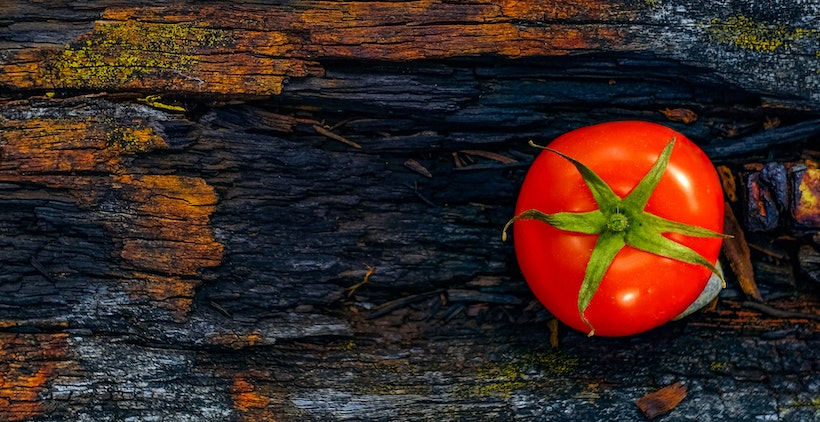
Before we talk history, let's talk a bit about the tomato itself – and try to classify what, exactly, a tomato is.
Tomatoes contain seeds, so they are botanically considered fruits, with the scientific name Solanum lycopersicum. More specifically, they are a berry – with the skin being the outer exocarp, the fleshy/pulpy mesocarp, and seeds inside. Of course, culinarily, the tomato is a vegetable – lacking the high levels of fructose (and the sweeter taste) of what we traditionally call fruits.
So – they're both fruits and vegetables. What an enigma!
They belong to the nightshade or Solanaceae family, which is probably the reason they were considered poisonous in Northern Europe and most parts of the U.S.A, even a few two centuries ago.
Modern tomatoes are descendants of the strain Solanum pimpinellifolium. This is a wild tomato species, native to Peru and Ecuador, that were ancestors of the tomatoes we know and love today.
Tomato breeding techniques have come a long way, though, and modern methods now allow us to create fruits that are firm, juicy, resistant to diseases, plush red, and robust enough to travel well.
Since they are one of the most popular grocery purchases globally, you probably knew that tomatoes could be grown in a wide range of soils, ranging from heavy clay to sandy. The ideal conditions to grow these fruits are:
The ideal temperature to grow and harvest tomatoes is between roughly 69 to 75 degrees Fahrenheit, making it a warm-season crop. However, beware heat; temperatures over 90 degrees are detrimental to the fruit's development. Extreme conditions – such as high levels of humidity or frost – are also damaging to the plant.
If a harvest receives high volumes of sunshine when the fruit is about to set, it can create dark red colored tomatoes. Temperatures below 50 degrees Fahrenheit slow down the plant's physiological growth and negatively affect a tomato harvest.
Are you planning to grow some? Let me know in the comments – tomatoes are a particularly fun plant to grow, even in a deck garden.
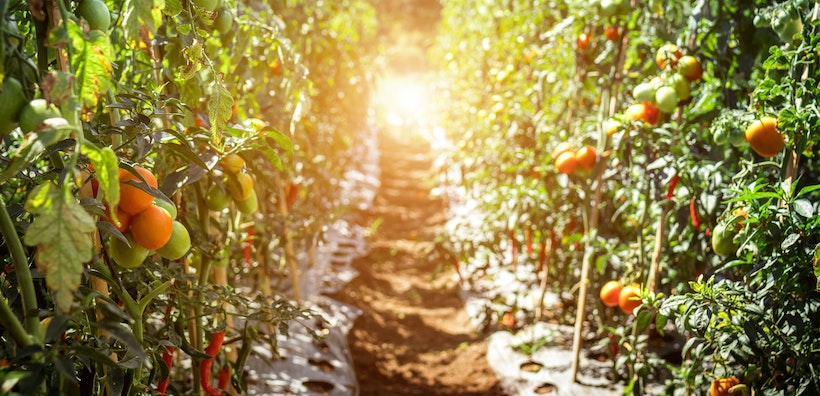
Like us human beings, tomatoes are mostly made up of water – upwards of 90% - 95%. The rest of the fruit consists largely of fiber and carbohydrates. For every 100 grams of raw tomato, you can expect to find the following macronutritional breakdown:
Zooming into the vitamins and minerals in a single tomato, you'll actually be pretty impressed. Here are some of the standouts:
Tomatoes also contain a set of plant compounds that are beneficial for the physiology of human beings.
Tomatoes have been readily adopted in cuisines around the world thanks to their versatile nature. And their unique constitution – fleshy outside and pulpy middle, means they're even best prepared by special tomato knives.
Some of the most common dishes that are heavily reliant on the use of tomatoes include:
Tomatoes have become a global tour de force today, but originally they were limited to only one pair of continents — the Americas. One study traces the earliest ancestor of the fruit to South America, where the grandfather of all tomatoes — Solanum Pimpinellifolium L., was known to have been first domesticated.
This species gave rise to the S. Lycopersicum L var. Cerasiforme (S. l. Cerasiforme), which, in turn, birthed the most common tomato species known on the planet today — Solanum Lycopersicum L. var. Lycopersicum (SLL – the one you chop to put on your salad). It first made its way into Mesoamerica before finding its way to the rest of the world.
That's just the tomato, though – nightshades, particularly the tomatillo, have an even longer history. A few years ago, scientists found a tomatillo fossil in Patagonia, Argentina they dated to roughly 52 million years old!
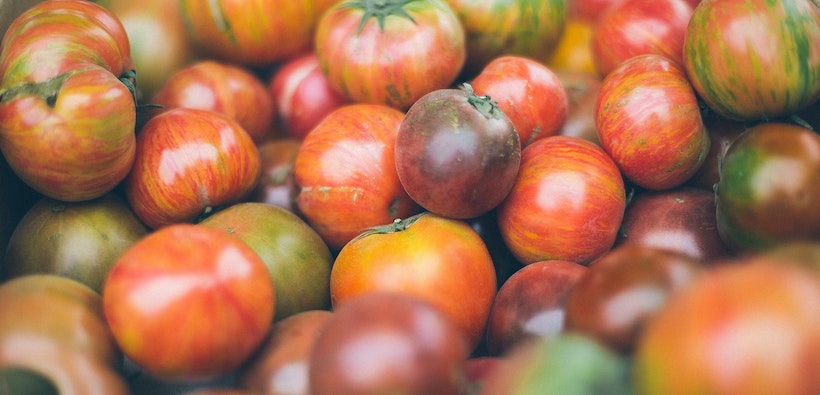
As mentioned in my introduction, as far as we know, the Aztecs were primarily responsible for first understanding the fruit's versatility and using it as an ingredient in their cooking. We even derive the word tomato from the Aztec word "xitomatl" (pronounced as ji-tomatel).
By the early sixteenth century, the Aztecs had domesticated a reasonably modern version of their tomatoes and had created at least 50 unique recipes using the red wonder as a base. Early Aztec writings reveal recipes for a dish that uses tomatoes, peppers, and seasoning – yes, recipes for salsa have been around for an extremely long time!
We now know that the Aztecs of Mexico were a source for tomatoes that were taken to Spain and the Mediterranean by the Spanish conquistadors – likely Columbus or Cortés. We even have a record of the fruit entering Europe with the earliest mention of them being seen on the continent by Mattioli in 1544. (At the time, he essentially called it an eggplant).
Before making it to Europe, tomatoes had a good stint in Pueblo culture and had a reasonably influential touch on their customs and beliefs. The journey from South America to Europe featured a noteworthy stop in Central America where the tomatoes interacted with Native American culture.
While the Pueblos certainly used tomatoes in their cooking, they did not explore it as deeply as the Aztecs in their culinary style.
Instead, there were a few noteworthy associations between the Pueblos and the tomato. This included the belief that those who consumed tomato seeds would be blessed with the powers of divination.
Hernán Cortés is the Spanish explorer who is credited with introducing the tomato to Europe. He did this after successfully capturing Tenochtitlan's city in 1521, and he used the Spanish colonial system to spread the fruit successfully across the rest of the world.
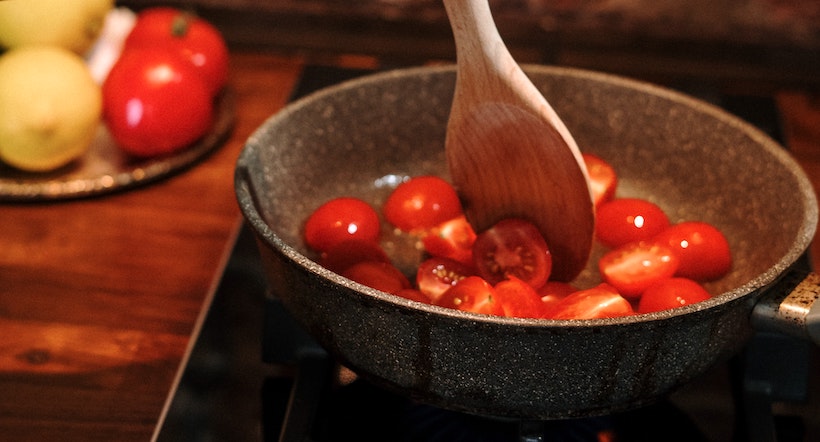
Before reaching Europe, tomatoes first made their way to the Caribbean islands. And after Europe, the naval path to the Philippines was used to take the plant to Asia.
Its path to Europe, and specifically Italy (where tomato's culinary popularity first took off), is harder to trace, but there have been several handwritten accounts to read. The first of these dates to 1548 in Tuscany, where the fruit was improperly thought to be a type of eggplant, and it was named "Pomodoro" or pomi d'oro.
You might think the "Pomodoro" caused shock waves across the country and transformed the landscape of Italian cuisine as soon as it entered the market – alas, this was not the case. Many of the Italian tomato dishes that we know and love today are quite recent.
It wasn't until the late nineteenth century that the modern-day tomato had firmly cemented its roots in Italian culture. Pasta and pizzas were around for quite some time by this point, but they depended on base ingredients such as cheese and olive oil for flavor until someone had the bright idea of adding tomato sauce. But really, the history of pizza is interesting on its own.
The Chinese and Europeans eventually whole-heartedly embraced tomatoes in their cuisine. After the tomato's travels to Europe, the fruit was also making the rounds in Asia, where it continues its popularity to this day.
In Chinese culture, written records of tomatoes date back to 1621 during the Ming dynasty. Much like Italian culinary culture, China took a fair amount of time to warm up to the fruit. In fact, the tomato's first records read more like a precaution – written records tell of a Western-originated fan persimmon.
Although tomatoes never rose to culinary prominence in the same way as they did in Italy, several regions of China became quite reliant on the use of tomatoes in their dishes.
By the turn of the nineteenth century, tomatoes had officially migrated to most parts of Asia. During this period, they also found their way into Syria and Iran. There though, they were widely used almost immediately.
Despite originating in the Americas, the tomato did not appear mainstream in the United States of America until Thomas Jefferson took an interest in the plant. Yes, that Thomas Jefferson – the 3rd president of the United States.
As tomatoes belong to the Nightshade family that is traditionally associated with poisonous fruits, purportedly many North Americans were weary of eating the fruit when it first made it to the states – fearing for their safety.
On the other hand, Thomas Jefferson was a noteworthy food connoisseur, and his taste in exotic fruits and vegetables was on full display at his garden at Monticello. (He also figured in the American history of ice cream).
It is said that the Miller-Claytor House in Lynchburg, Virginia, built in 1791, was locally referred to as the "tomato house." This is because Jefferson first shocked the people of the region by publicly consuming a tomato at this location. He didn't die – possibly to the crowd's amazement.
That's the myth, anyway – Culinary Historian Andrew Smith disagrees and notes people in the US were eating tomatoes as early as the 1770s. Jefferson may have been a bit late to the party.
Once said myth was dispelled – or, alternatively, once people saw public figures eating the strange fruit – tomatoes still took a fair amount of time to become popular for consumption across the United States.
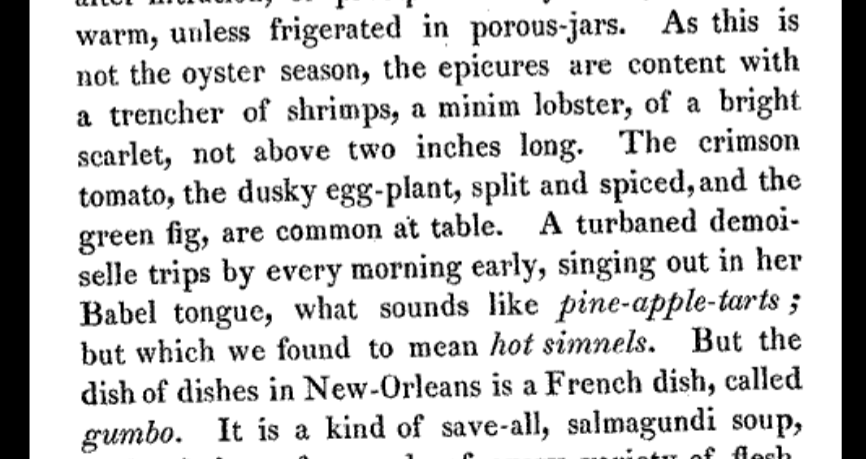
The South's history with tomatoes is an interesting one. An early record of tomatoes being marketed in New Orleans exists from the year 1812.
The North took longer to warm up.
In 1820, a former colonel named Robert Gibbon Johnson took to the streets of Salem, New Jersey, to further Jefferson's point and disprove any negative connotations related to tomatoes. He did this by following Jefferson's footsteps... and consumed a tomato (possibly even a basket of tomatoes) in public. He, too, didn't die.
By the year 1835, tomatoes were available in the markets of Boston. When the civil war broke out a few decades later, tomatoes were in the fray in a big way.
The Union Army relied on canneries to process tomatoes for easy access to nutrition – tomatoes eventually became the most popular product sold in cans during the civil war.
And there were knock-on effects: farmers in the country realized the sudden rise in tomato demand, and switched their crops quickly to incorporate more tomatoes.
The rise of the fruit's popularity continued to grow steadily over the next few decades. They eventually became a widely accepted fruit by the middle of the nineteenth century. And wouldn't you agree: they are still pretty popular today?
Tomatoes have undergone a massive evolution since their wild cherry days up in the Andes mountains. The story of the modern-day tomato itself has many chapters that were penned in the 20th and 21st centuries.
One of the primary authors of these new chapters was Alexander W. Livingston, the man behind the Paragon tomato. He was an expert on seeds and plants in the region of Reynoldsburg, Ohio, and operated in the latter half of the 19th century.
In 1852, Livingston acquired seventy acres of land in his hometown to set up the A. W. Livingston Buckeye Seed Garden. During his tenure in this garden, he developed a new strain of tomato seeds to improve the tomato properties. That variety, the famous Paragon – sweeter than the sour tomato varieties of the time – was developed around 1870.
Livingston fully immersed himself in developing different strains of the fruit from this point onwards, and he was successful in producing thirty more varieties over the next 28 years. None, though, attained the popularity of the Paragon.
Joseph Campbell greatly furthered the work that Livingston began. He and partner Abraham Anderson set up a company that first introduced Americans to condensed soup in 1897. And yes – he's the Joseph Campbell behind Campbell's Soup.
The soup business boomed at this point, and Campbell's was first in line to make the most of this popularity. And by 1905, the company was producing 21 different types of soups that included bean, beef, and clam chowder – but tomato soup was one of its biggest sellers.
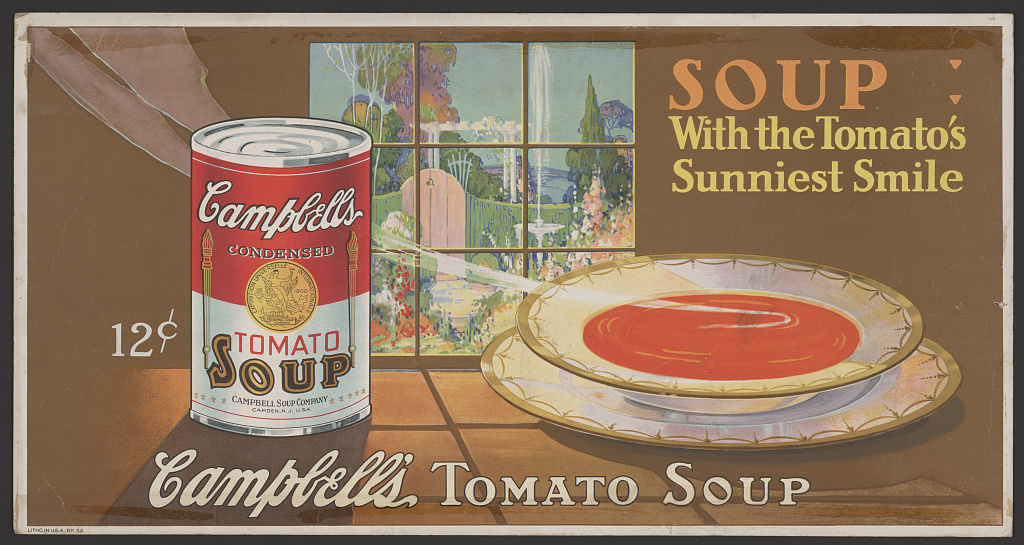
We did miss out on some twists and turns during our exploration of the history of this magnificent fruit. This section will relay a few of the myths related to tomatoes and the facts behind them.
There was a lot of fear associated with tomatoes, even among the scientific community in the 18th century, and they reflected this fear in the fruit's naming.
They dubbed tomatoes with the dubious scientific name Lycopersicon esculentum as early as 1768, which translates to "edible wolf peach."
As it belonged to the nightshade family, researchers were afraid to touch or consume the fruit, fearing the worst.
Surely, calling it a wolf peach didn't help!
The fact that tomatoes belonged to the nightshade family already made them a suspicious fruit. A subsequent controversy broke out in Europe during the 18th century when public poisoning caused by eating tomatoes helped sustain this fear for centuries.
The better-to-do people shunned the tomato. They referred to it as the "poison apple" during this phase in history, even though it was innocent.
But something was going on, indeed. The reaction of the lead in the victims' cutlery with the acidity of the tomato was the likely reason behind the poisonings.
Poorer sections of society did not face any lead poisoning. They did not use any fancy cutlery for their meals, so they did not pick up the negative associations with tomatoes.
Weird, isn't it? True – but to this day, you need to be careful with acidic dishes (such as those with a tomato base) on particular surfaces. Aluminum is a big one – heating tomato sauce on aluminum foil or using aluminum cookware or camping utensils can cause large amounts of aluminum to migrate to your food.
It's no lead, but long term aluminum exposure can cause issues. Be careful!
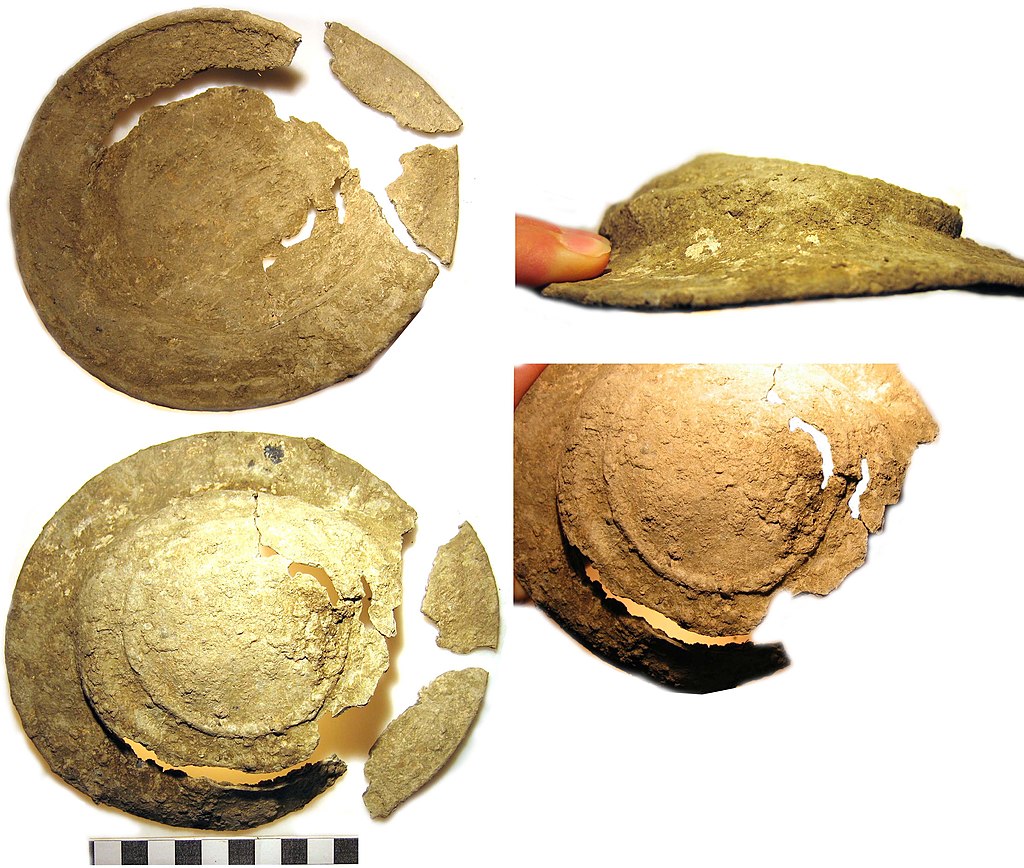
Tomatoes are culinary vegetables and botanical fruits. Due to their relative lack of fructose and sugars and starches, the tomato is treated as a vegetable in food... along with the cucumber, pumpkin, and green bean. However, a tomato is a fruit – and even more specifically, a berry – botanically.
Yes, I know we discussed this, but the annoying riposte tossed out by your nephew is deeper than you may first think. It's been the subject of tariff disputes, Supreme Court decisions, and even a Presidential fight.
The Tariff Act of 1883 was signed into law by Chester A. Arthur, and one of the provisions increased the tariff owed when importing fruit. That's straightforward – but when John Nix & Co. tried to import tomatoes only to run into a tax levied by the Port of New York's Edward Hedden, the highest Court in the United States eventually weighed in. On May 10, 1893, the United States Supreme Court found that tomatoes are vegetables, not fruits.
Around 90 years later, the Executive Branch of the United States made things even sillier.
After Ronald Reagan entered office for his first term in 1981, Congress passed a law cutting $1 billion in child nutrition funding. In the scramble to change the standards (they had roughly three months to recommend new guidelines), the USDA, in exasperation, listed ketchup as a vegetable. (Relish made the cut too!)
Beaurocratic infighting and silly rulemaking? Perhaps – but the highly embarrassing battle is one of the more famous kerfuffles of the Reagan Administration. And to this day, the short version of the story means you can make ketchup is a vegetable jokes and still get a laugh!
Today, tomatoes have left their controversial past behind and become a superpower in the world of grocery essentials. Internationally, they are one of the most important crops, taking 15% of the total share of all fruit and vegetable production. In 2011, this amounted to nearly 160 million tons, or 20 kilograms per capita, worldwide.
Compared to the rest of the world, North America consumes the highest quantities of tomatoes each year, with consumption reaching 42 kgs per capita. Europe takes the second spot on this list with an annual use of 31 kgs per capita.
At the country level, though? You guessed it – Italy stands tall as the tomato capital of the world, with an annual per capita consumption of 60 kgs. This comes as no surprise, although Italians from two centuries ago would undoubtedly be shocked at this transformation.
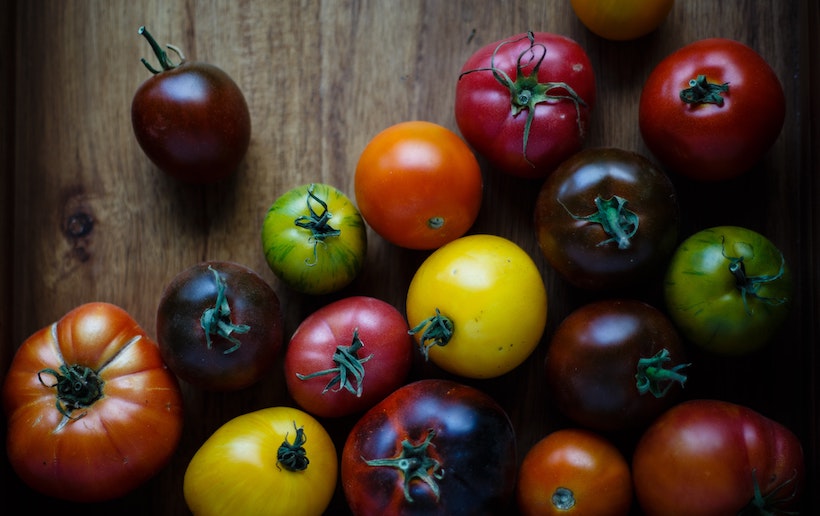
There you have it – it's been a long, weird history for the world's most controversial berry. From being unfairly painted as poisonous to finding corner cases in tariff laws, confusing the Supreme Court, and shaking up the USDA – the tomato has done it all.
Tomatoes took a trip from the Americas around the world and back to the Americas before they became the king of the fake vegetables. What a fascinating (culinary) vegetable – I hope you have just a little more interest the next time a wolf peach is on your plate!
A wonderful piece of history, well-told.